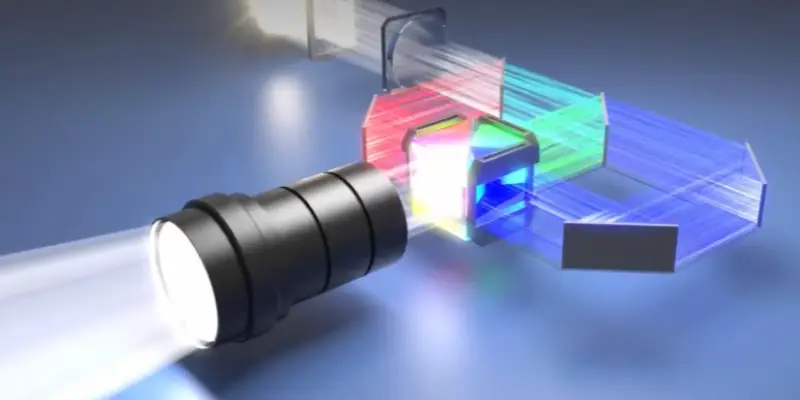Whether shopping for the best projector for home cinema or office presentation needs, you will likely have two main options; DLP vs 3LCD.
In short, the Digital Light Processing (DLP) and Three Liquid Crystal Display (3LCD) refer to ways how the image is projected by these projectors.
Both of them were launched pre-2000s but still remain popular due to their affordability and functionality. Most aspiring projector buyers have a hard time figuring out the difference between the two.
Worry not, this guide will help you understand the difference between 3LCD vs DLP projectors to make the best purchasing decision as per your needs.
DLP vs 3LCD Projector
The main difference between the DLP and 3LCD projector is the quality of the image produced on the screen. The type of projector heavily influences the display quality.
Moreover, DLP is a new technology that first came out in 1987. Whereas, LCD is over 50-year-old technology with exceptional brightness, level of color, and details.
What is a DLP Projector?

DLP technology adopts a digital micromirror device chip (DMD) with potentially 2 million micromirrors to project a high-definition image. More mirrors mean more pixels as each mirror contributes to a crisper display.
Spinning Color Wheel
DLP uses a 3-chip RGB system or a color wheel to control color. The revolving color wheel spins at thousands of revolutions per second, quickly alternating between red, blue, green, black, and white. Quick color flashes may create a rainbow effect on DLP images.
Micro Mirrors
Each micromirror for every single tiny pixel ensures amazing visuals. These thousands of micromirrors are coordinated with a light source (bulb, LED, or laser) to produce an image.
Application
DLP is an affordable and new type of technology that is primarily used in colleges, schools, and conference rooms with controllable ambient lighting.
What is 3LCD Technology?
3 LCD is a modern variant of old LCD technology that produces vivid images with smooth motion and no color breakup.
Compared to its predecessor, it ensures exceptional level output, correct levels of brightness, and amazing detailing without using too much power.
- Functionality – 3LCD projection technology utilizes a prism instead of the color wheel and micromirrors to create an image. The prism separates the light from the lamp or LED into three primary colors, RGB. All RGB elements are passed through LCD panels to project a full-color single image.
Difference Between DLP and 3LCD Projectors
These are two different image generation technologies that adopt different ways to create an image. They do not share any commonalities as both works differently.
Definition
- DLP – This projection technology uses a digital micromirror device to project images onto the large screen.
- 3LCD – This type of projector is a modern variation of slide, overhead, and LCD projector that has three transparent liquid crystal display (LCD) panels to create an image.
Functionality
- DLP – DLP uses DMD which crams millions of tiny mirrors in a small space, each mirror corresponds to a tiny pixel, resultantly, crisp display.
- 3LCD – It uses a prism and three transparent LCD panels, each with a primary color for projection on the screen.
Image Quality
- DLP – DLP ensures shake-free smooth video with decent image quality. It ensures higher contrast and produces darker blacks for image optimization.
- 3LCD – This projection technology ensures richer color, excellent brightness, and sharper image with no rainbow effect.
Contrast Ratio
- DLP – DLP has higher contrast than LCD or 3LCD, therefore, images are more crisp and vivid.
- 3LCD – 3LCD has a decent contrast but is lower than DLP.
Portability
- DLP – DLP projectors are packed in smaller housing for convenient transportation. They are generally lightweight, weighing just a few pounds.
- 3LCD – They are larger and bulkier, therefore, you may have trouble with installation and transportation.
Price
- DLP – The cost of a DLP projector starts as low as $300 and goes over $1000.
- 3LCD – 3LCD projectors are available within the varying price ranges which often go up as high as $1000.
Light Source
- DLP – This projection technology uses LED, standard lamp, or laser as a light source.
- 3LCD – It generally uses standard lamps as a light source.
Types of Technology
- DLP – It is a reflective technology.
- 3LCD – It is a transmissive technology.
Drawbacks
- DLP – Due to the usage of spinning color wheels, it may create a rainbow effect. It produces an audible noise while projecting because of more moving parts. It does not project authentic reds and yellows at full power.
- 3LCD – They are larger in size, therefore, not portable. It does not have higher contrast, dark scenes are not as optimized as in DLP.
3LCD vs DLP, Which One is Better?
Both technologies project decent images for most business and home theater requirements. Either technology will work efficiently unless you have very specific requirements, for instance, having a high degree of color accuracy or higher contrast.
Make a wise purchasing decision based on image qualities, durability, projection technology, price, budget, requirements, and other capabilities.
Read also: Cinemark Vs AMC